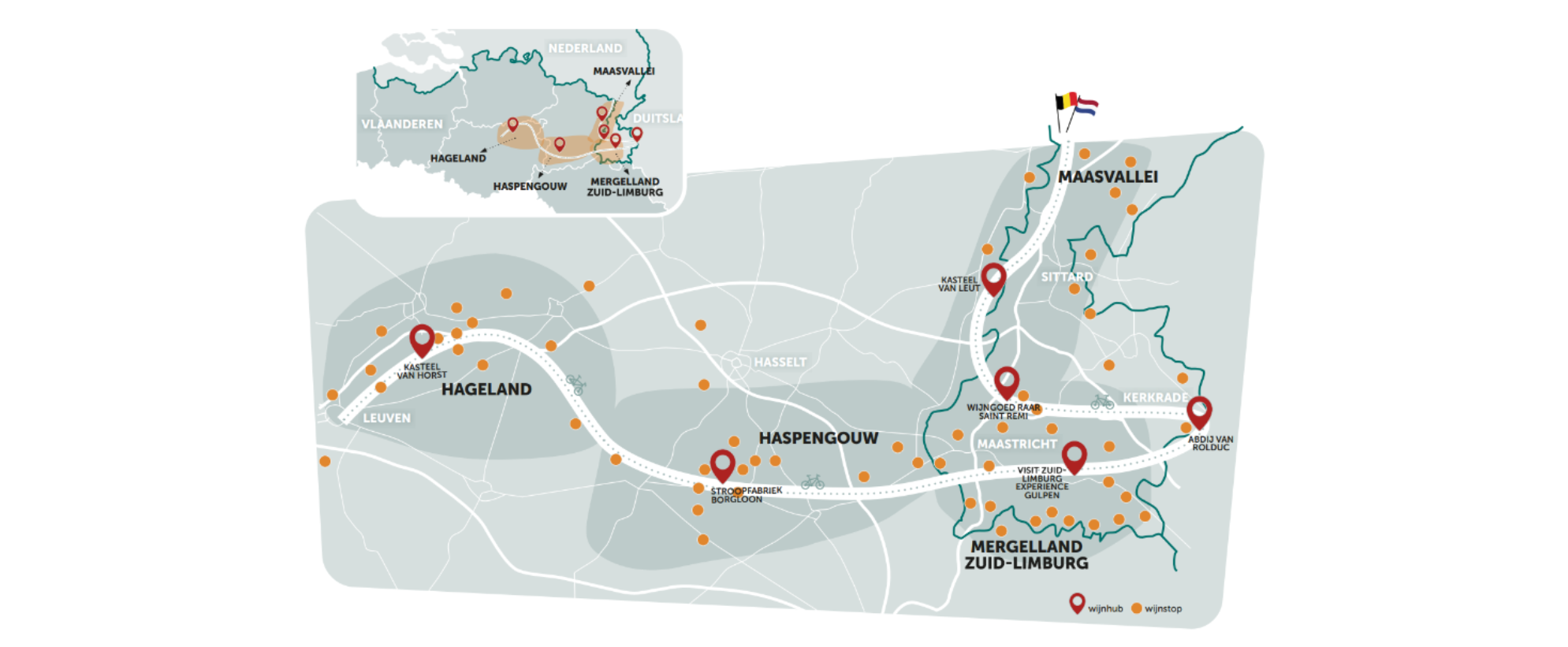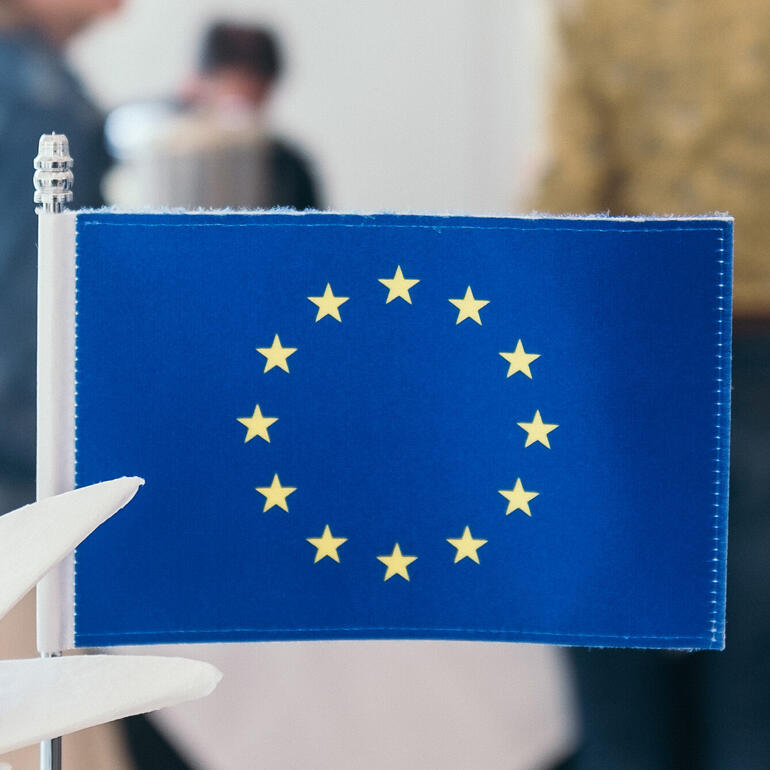
Wijnstraat
Sustainable wine tourism in the border region
About us

Tourism and leisure are recognized as powerful levers for positive social, environmental and economic change. Wijnstraat focuses on promoting sustainable tourism through cross-border cooperation and creating a unique experience around wine.
The goal is to increase the attractiveness of lesser-known wine regions by spreading visitors in time and space, attracting a broader target group and promoting sustainable wine tourism. This is achieved through three main pillars:
- Wine identity research: understanding the unique terroir of each wine region and defining regional wine identity
- Development of the wijnstraat and wine experience: establish physical connections between wine regions with recognisable gateways and heritage sites, called wine hubs, which serve as a base for culture lovers and value-added seekers. The four wine regions with a recognised designation of origin, Hageland, Haspengouw, Maasvallei and Mergelland/South Limburg will be linked by a cross-border long-distance cycle route: a real wine street of up to 150 km long. The wine hubs are the castle of Horst (Hageland), the Stroopfabriek in Borgloon (Haspengouw), the castle of Leut (Maasvallei Belgium), a monumental building in the centre of Meerssen (Maasvallei Netherlands) and the abbey of Rolduc (Mergelland South Limburg).
- Building a wine ecosystem: enthuse entrepreneurs to participate in sustainable wine tourism through knowledge exchange, product development and the creation of wine experiences, supported by a joint framework and training activities.

* The image of the wijnstraat is illustrative. The route and wine stops shown on the map are not fixed either geographically or in numbers. If you are interested in being part of the wijnstraat and/or helping to shape it, please let us know via: link.




